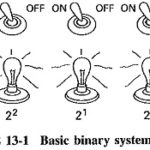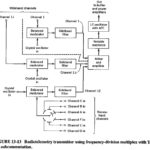Pulse Communication Articles:
Measurement of Information in Communication System: Having said what information is not (it is not meaning), we now state specifically what information is. Accordingly, information is defined as the choice of one message out of a finite set of messages. Meaning … (Read More)
Noise in Information – Carrying Channel: Noise in Information-carrying capacity of a channel. This idea will now be explored further, as will means of combating noise. Effects of Noise: That Noise in Information has some harmful effect has already been demonstrated. To quantify … (Read More)
Telegraphy in Electronic Communications: Telegraphy in Electronic Communications that employs typewriter like machines operating at a maximum speed of about 60 words per minute (wpm) to send written messages from one point to another. In telegraphy, a user lodges a written … (Read More)
Telemetry in Electronic Communications: Telemetry in Electronic Communications consists of performing measurements on distant objects. Although hydraulic or wire circuits may be used for this purpose, this section will deal with radiotelemetry only, particularly as this form is now prevalent. The … (Read More)

